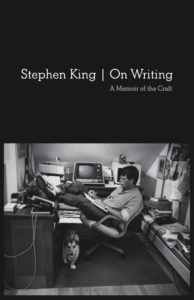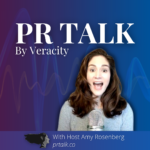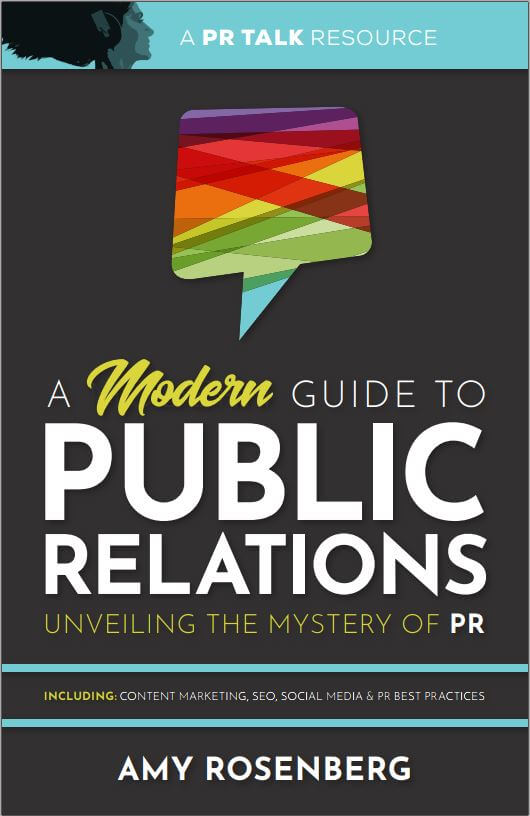![PR Talk Host Amy Rosenberg [Podcast]](https://www.veracityagency.com/wp-content/uploads/Amy-Rosenberg-PR-Talk-Host.jpg)
![PR Talk Host Amy Rosenberg [Podcast]](https://www.veracityagency.com/wp-content/uploads/Amy-Rosenberg-PR-Talk-Host.jpg)

Amy’s Book Reviews—On Writing, Racism & Working Freedom
I read every night, no matter what.
It doesn’t matter if it is a work of fiction, a business book, or a personal self-improvement compilation. The act of reading helps me fall asleep but it’s so much more.
On the deepest level a good book affects my dreams. My dream-thoughts are influenced and structured the way in which the writer structures their prose. I’m literally writing in my dreams—heavily copying my current read’s style, pulling out lines for press releases and emails in the most mundane sense but if I’m really lucky I’ll dream a line from out of nowhere in the early morning hours that could be used in a different sort of piece. If I’m even luckier, I’ll remember it. Twice the lines have jolted me awake and I had to write them down.
On a more fundamental level I believe that reading helps us become better writers. It is through reading that we learn how to structure a phrase, move to new ideas, deliver a quote. Since this is a business blog I will introduce a few of the business books that I’ve read but I can’t do that without mentioning the book I simply could not put down, finished last night.
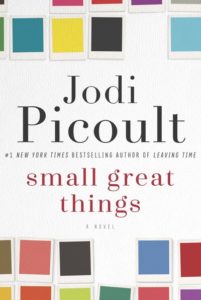 It was one of those books that I am happy to be done with because it was consuming my thoughts, affecting my sleep, not only because I couldn’t put it down but because when I did I was wondering what would happen next, upset about the injustice of it all.The book was “Small Great Things” by Jodi Picoult, said to be the most important novel she has ever written by the Washington Post. If you are a human living on this earth, you simply must read it. It explores racism in America through a fictional setting in which an African American nurse cares for the baby of white supremacists. What’s even more shocking than what happens next is getting a peek into the minds of each character, representing varying points-of-view in America, from the white supremacist to the middle class African American to the privileged white defense lawyer—who’s unrecognized, hidden racism is the most surprising of all. Something we need to examine deep within ourselves if we are also white and believe we are not racist.
It was one of those books that I am happy to be done with because it was consuming my thoughts, affecting my sleep, not only because I couldn’t put it down but because when I did I was wondering what would happen next, upset about the injustice of it all.The book was “Small Great Things” by Jodi Picoult, said to be the most important novel she has ever written by the Washington Post. If you are a human living on this earth, you simply must read it. It explores racism in America through a fictional setting in which an African American nurse cares for the baby of white supremacists. What’s even more shocking than what happens next is getting a peek into the minds of each character, representing varying points-of-view in America, from the white supremacist to the middle class African American to the privileged white defense lawyer—who’s unrecognized, hidden racism is the most surprising of all. Something we need to examine deep within ourselves if we are also white and believe we are not racist.
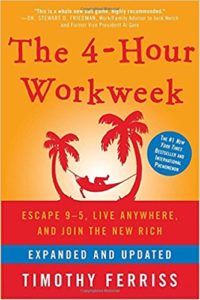 And on that uplifting note, I’m moving on to the business books. I am loving Tim Ferriss’ “The 4-Hour Workweek.” I purchased it on my iPad and devoured it, realizing I needed to hold it in my hands so I could dissect it further. So I bought it again in hardback and am writing notes in the margins.
And on that uplifting note, I’m moving on to the business books. I am loving Tim Ferriss’ “The 4-Hour Workweek.” I purchased it on my iPad and devoured it, realizing I needed to hold it in my hands so I could dissect it further. So I bought it again in hardback and am writing notes in the margins.
I’d already done half of the book’s suggestions years before reading it. And I mean that in the most elemental way. About 10 years ago I quit my desk job to work as a PR freelancer — grasping at the freedom Ferriss promises in his book. This grew into my company, Veracity.
While having my own business offers flexibly, I still must answer to bosses in the form of clients. This is where the more advanced part of Ferriss’ book comes in. His book is giving me the courage to move our business in a different direction—creating products we can sell in our sleep rather than offering services we manually fulfill. I’m currently following his book’s advice in launching a product which I’ve discovered is turning into a book about PR. Who says a book isn’t a product that you can sell in your sleep? Also to Ferriss’ point: the book brings credibility to any future products we might develop.
The product may have merged into a book when I started reading Stephen King’s “On Writing,” which could give business owners a different kind of courage. The courage to take seemingly hard business endeavors one day at a time, as King advises we write. The schedule I put myself on to build the product has inadvertently turned into a writing schedule (one of King’s tips).
Another key point in King’s book is to forgo book outlines to maintain creativity and flow. I think the same could go with building a business. We work on the business one day at a time. We don’t always need to embark on setting down a huge plan, which could be intimidating as you can overthink yourself out of great ideas. I’ve learned how to spend that precious time actually making things happen for my business rather than plotting and planning.
Featured image courtesy of Clem Onojeghuo

Podcast Role Reversal: Local PR on the Hot Seat with The Zip
Pretending to be a stay-at-home-mom, the three tiers of journalism and PR for the people. Amid bites of line-caught Oregon salmon at SEMpdx’s Engage Conference in March, Amy got the chance to unleash her inner local PR nerd to Megan Hannay, Co-Founder & CEO of...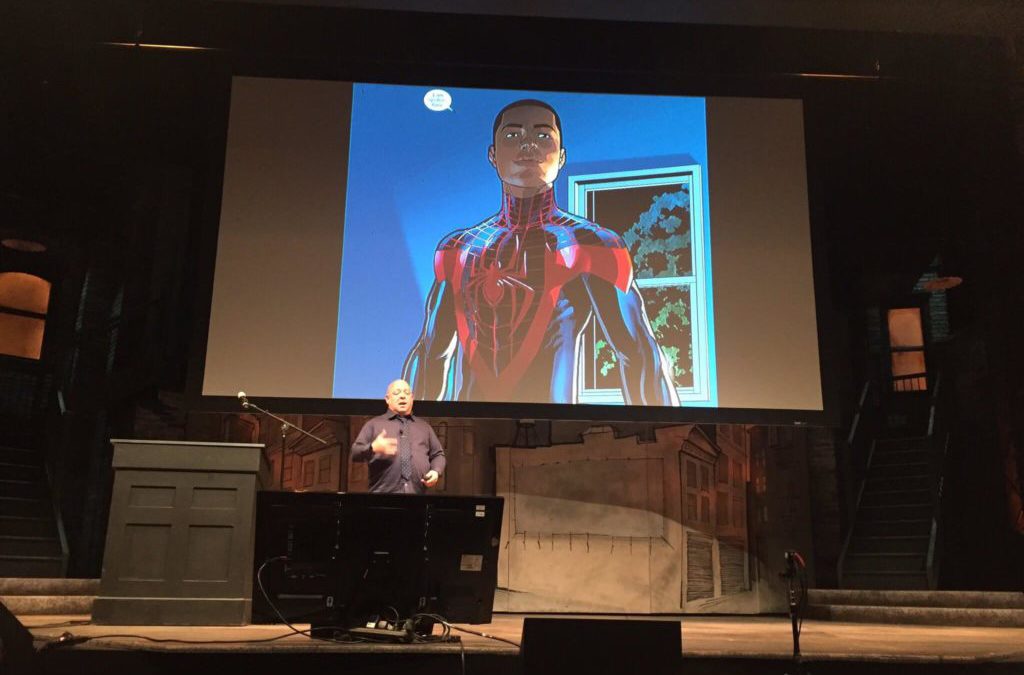
Lines Between Art and Entrepreneurialism Blur at the Portland Creative Conference
Entrepreneurs could learn from the artistic community’s reliance on a dirty two letter word.
Last week I was privileged to attend the Portland Creative Conference at the Gerding Theater. Artists of all kinds offered inspiration to an audience comprised of budding and established artists, agency executives, in-house marketing teams and leaders within the Pacific Northwest arts scene. Screen writers, documentary producers, comedians and fashion designers vulnerably delved into past mistakes — coming full circle into how they overcame these heartbreaks to develop a stronger artistic self, whether “success” was part of the mixture or not.
What surprised me the most was my reaction to the discussions. I had no idea art could be so closely related to entrepreneurialism. Since at times I consider myself a fledgling writer (who doesn’t?), I expected to identify from a writer’s point-of-view — inspired to give it all up to burrow myself into my first novel.
Instead I found my entrepreneurial spirit reawakened with each speaker’s gusto. This could be a sign that my headspace just happens to be filled with new business ventures, but I think its more than that. Entrepreneurialism permeates everything. It’s a motivating mindset whether you’re employed or striving to make it on your own, which couldn’t be more true in the artistic realm. Artists must have a bold entrepreneurial sense in order to stay true to their art, presenting their medium in the purest form, as they desire it to be consumed by the world.
An important theme ran through the discussions, whether the presenter was employed in the traditional sense or not. Each presenter acted as their own boss, going to great lengths to see their original visions carried out, daring to believe in themselves and their artistic point-of-view. This most notably involved using the word “no” on a consistent basis.
Below you’ll discover the NO theme within the top insights garnered from some presentations. Relate this back to either your day job or your budding new business venture.
“Art is about being creatively maladjusted,”
With Donald Trump highlighting Chicago’s violence during the recent presidential debate, there couldn’t be a more poignant time to discuss Kevin Willmott’s work on “Chi-Raq,’ a movie he co-wrote with Spike Lee staring Jennifer Hudson, Angela Bassett, Samuel L. Jackson, John Cusack, Nick Cannon, Teyonah Parris and Wesley Snipes. The satire, which was released in 2015, spotlights frustrated girlfriends and wives of Chicago gang leaders who abstain from sex until their men agree to give up their guns. The name Chi-Raq stems from the killing of 4,265 Chicago citizens from 2003-2012 — nearly the same number of U.S. soldiers who were killed in Iraq during that time. See the entertaining trailer:
How does all of this relate to art? It’s a historical example — sex strikes aren’t new — of how creative solutions are born out of struggle, which can then be expressed through the arts. Willmott noted that the racial injustices of today will bring forth change makers that find their artistic voice amid poverty and inequality. They will essentially say “no.”
Does this sound familiar to the minority entrepreneur breaking into a traditionally white, male industry? Or even the minority worker who denies the place they’ve been dealt and rises above the strife to land an atypical job? Do not forget the startup that recognizes a problem — a form of industry maladjustment — and brings a new solution to the table — creatively. I would have to say that business is also about being creatively maladjusted.
“Your journey isn’t about becoming something. Its about unbecoming something that you’re not,”
TV screenwriter Paul Guyot, known for shows like Felicity and Leverage, began by offering actionable tips for how artists (and business people!) can approach the day. His artistic life was changed when he made the commitment to spend the first 90 minutes of each day screen free. Now his mornings are spent launched into a planned project before looking at Facebook, email, phone, etc. What used to be a strain can now turn into 3 hours of uninterrupted creativity. Guyot blames screens for dictating the demands of others, putting us in reactive, rather than active, states. If you start reacting to everything that comes across the screen, you really aren’t in charge of anything. The rest of the day can be spent in an organic, reactive state to appease the needs of others.
Guyot had his biggest artistic breakthrough when he realized that even though he was working on hit shows, he wasn’t feeding his artistic soul. He was essentially interpreting other people’s art and ideas. An empowering journey led him into trusting himself enough to become his own muse, breaking away from other people’s depictions of how a scene or a dialogue should be portrayed.
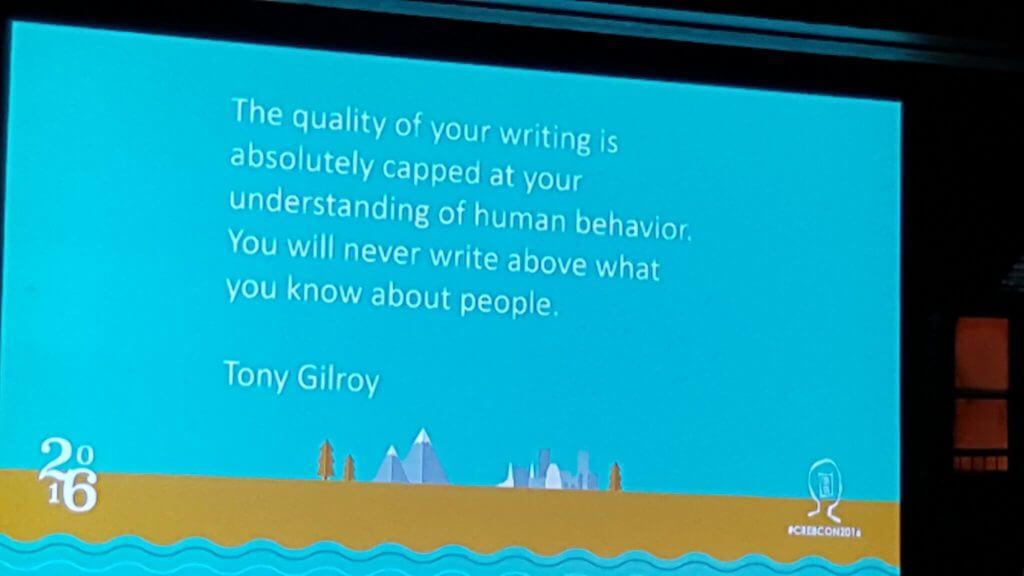
photo courtesy of @JoeSmithPDX
The journey climaxed when Guyot turned down the chance to work on a hit show — essentially committing career suicide as he put it. “I was done working for other people on stuff that wasn’t coming out of my creative soul. I wanted to pitch my little cable show [I believe he’s referring to The Librarians (TNT) but it also could be his latest project The Black 22s (National Geographic)] even if it meant that I’d be laughed out of the room,” he said. Four networks ultimately ended up bidding for it.
“Listen to your intuition,”
Michelle Lesnak, most known for winning Project Runway, credits her lack of fashion experience as her most valuable asset. Since she wasn’t trained in the technical sense she doesn’t feel bound to adhere by a strict set of rules.
The ultimate rule-breaker doesn’t follow trends and in fact blames them for ruining the industry. Much like the slow food movement, she’s aiming to bring forth what she calls the “slow fashion” movement. Creating pieces that end up in the dumpster after only 6 months of wear would be her ultimate fail, no matter how well they sell.
Specific story lines thread throughout each piece in an attempt to develop emotional attachments. A touch of welcomed altitude intoxication, mixed with wonder at the historically unchanged traditional Peruvian garb, shines through her latest collection inspired by a recent trip to Peru. Structural Peruvian elements, along with pops of the area’s bright colors, find their way into a wardrobe that mutely whispers rebel 90’s edge through details like safety pins and a sophisticated form of grunge-like layering.
Taking the right project is part of being a rule-breaking fashion designer. Lesnak advised the audience to start listening to their intuition when evaluating which projects, clients, or jobs to take. “If you’re hearing yourself say no at all during the beginning interview phases, it’ll turn into a much louder NO down the road,” she cautions.
That might just be the perfect quote to leave you with. It pretty much sums up the resounding NO theme that made its way into the entire day. The powerful word can be found within the oppressed standing up to their oppressors, the career person turning down prestigious job offers, and the artist blocking out eternal stimuli to ignore the boundaries established by their predecessors.
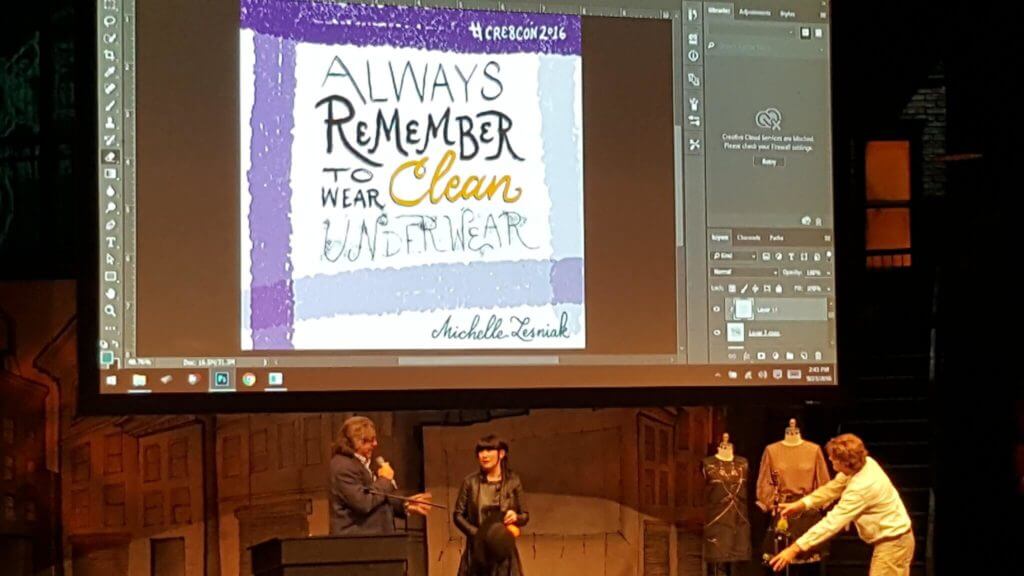
photo courtesy of @JoeSmithPDX
At the end of the day the entrepreneur is born out of the word NO. Saying no to the constraints of an industry is the impetus for a market disruptor. Saying no to the way a boss treats customers or employees creates a spin-off business. And finally, saying no to “opportunities” makes room for an abundance of energy to build — bringing new ideas, products, services or an entirely separate company forth.
featured image courtesy of @derrickstone
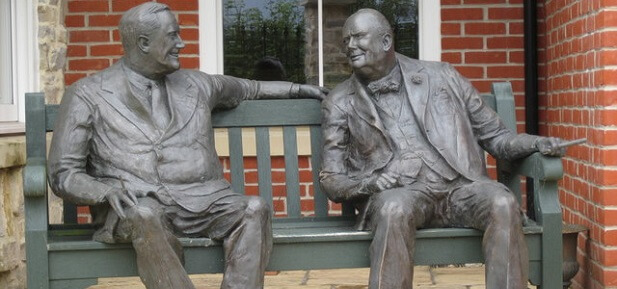
Control the Conversation
Tips for media interviewing, presenting and just talking with a human being.
It was an honor to present at the Northwest Credit Union Association’s Marketers Conference last week, but I’m sure I won’t be the first to say the star of the show was Anthony Huey of Reputation Management Associates. Over the course of three hours he delivered a fun, interactive presentation packed with media training and communication tips. I attempted to take notes but many of it is hard to convey as a camera was used with video being played back and Anthony’s suggestions peppered throughout the replaying.
But here goes, because you need to know this…
Time matters. Fill every second you get.
This doesn’t mean talk all the time! You have 10 seconds to answer questions with the press and 30 seconds to answer questions face-to-face. Even Barak Obama gets just 10 seconds to answer to press. If you go over with press they will just take what they want to create a 10 second sound-bite so you’ve completely lost control of the message.
This is important for everyone—whether you are a CEO trying to pitch a $2 million account or a soccer mom trying to get more field time for her kid’s league.
For example, how do you typically answer the question: “What do you do”? I always reply back with the short, yet firm, response of “I have a marketing firm.” And then I just leave it at that. Well think of all that time I’ve lost! That took about 3 seconds. I have 27 more seconds to fill in any regular conversation. I need to think about whom I am talking with and how they can help me with my agenda.
CONTROL the conversation. Not the other way around.
You cannot wait for the person to ask you the question that will lead you to your talking points. You must fight and take control. Possess an agenda. Satisfy irrelevant questions quickly and then say what you want to say. Use words like “for example” because it forces you to use examples. Examples are good—this gets you to the “how” of it.

